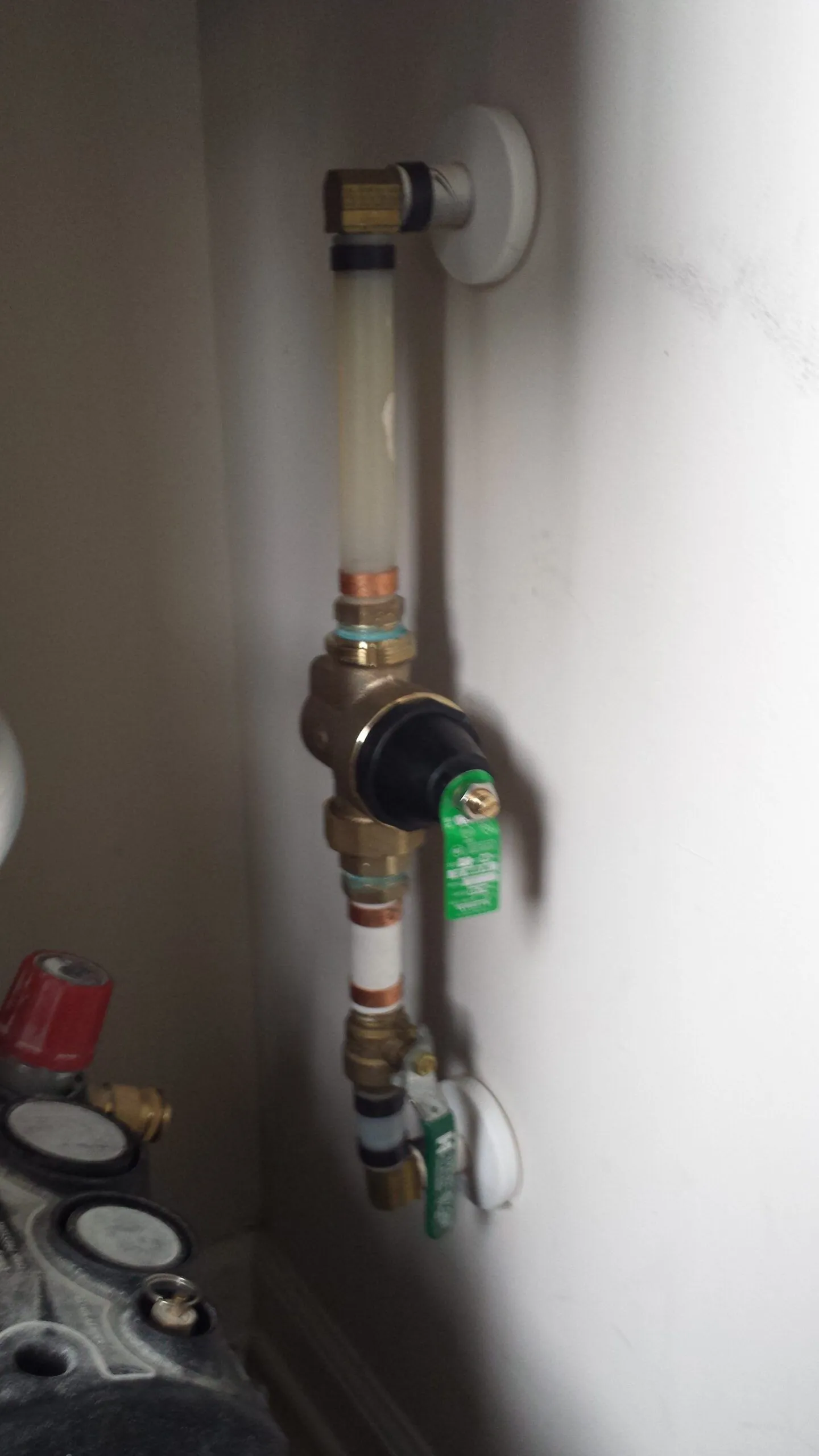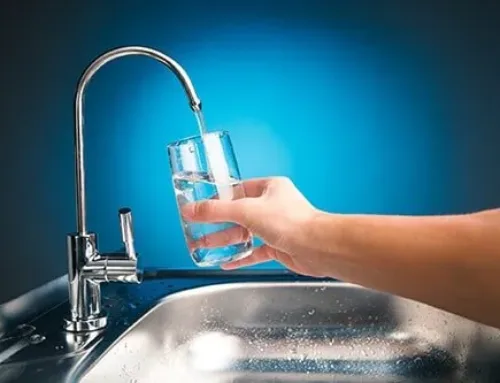The importance of servicing your water treatment systems yearly
Sometimes we think of maintenance as either a hassle, or useless. It is much easier to assume everything is working just fine and move on with our daily lives. We sometimes take for granted that everything in our lives simply work. We get up in the morning and are simply accustomed to the refrigerator keeping our milk cold as we pour our morning bowl of cereal. If it was a chilly night and our bare feet are getting cold on the tile floor and there is a chill in the air of our kitchen we walk to the thermostat and turn the dial a few notches and take for granted that the heat kicks on a chases the chill away. As we head to the garage to fire up our car we push the garage door opener and just assume the garage door will open just as it has the previous 1,263 times. We sit in our car and turn the key and expect that little sport coup to fire up and get us to work.
Most things in our technological world simply work, most of the time. It’s when it doesn’t work that things come screeching to a halt.
“Snap! the car doesn’t start!” “Now what,” we quietly yell in our minds. “How am I going to get to that 8:00 AM meeting now.” What could have gone wrong. Hmm, maybe the oil wasn’t changed in several years, or the battery terminals are all corroded and getting no contact, or the fuel filter is plugged. What is the terrible sound as we push the garage door opener and the next thing we see is the garage door somehow became derailed and just landed on our little sport coup! “What in the name of Mike just happened!! Argh!”
Many things in our lives rely on things working smoothly. Many of those things rely on moving parts, compressors, engines, motors, gears, circuit boards, and batteries. Things that need to be changed, maintained, and attention paid to them, if they are going to give us as much trouble free service as possible. This is where regular maintenance and comes in. Paying attention to the details.
Furnaces and air conditioners need regular maintenance. If filters aren’t changed the dirt can clog up the air flow and can also deposit tons of debris on the cooling core and make it inoperable, and that just may happen when it is 105 degrees outside, a bad time to lose your air conditioner. If your refrigerator isn’t serviced and the dust cleaned and inspected, that 1/4″ poly line that feeds your ice maker, may be leaning against the compressor which gets hot, and burns a hole in the line. Now every time it makes water 50% of it is going on the floor and running backwards towards the wall and squeezes between the wall and the floor and seeps unnoticed for months below your hardwood floors until one day you notice the floors curling up. Bad time financially now. Or you’re driving along the freeway and haven’t checked your coolant in forever and it’s leaked out and the engine overheats and cracks the block and now, not only are you stranded 200 miles from home, in the middle of nowhere, but it now is a $6000 new engine bill.
Sound far fetched? Nope. They all happened to me! Hard lesson to learn to simply put regular maintenance on the calendar and then just get it done. Which is what I did. I learned the importance, eventually, of putting effort into maintaining what I have. Not only will it help prevent inconvenient headaches and time delays, but saves money in the long run. If you’re constantly ruining things, not taking care of them, and are constantly rebuying everything, you’re flushing a lot of money right down the old water closet. Maintaining is a fraction of the cost.
So here is the plan of action, write a list of all the things you own that has internal parts that move. Furnaces, garage doors, dishwashers, refrigerators, automobiles, lawnmowers, water softeners, boats, motorcycles, table saws etc. Even such things as smoke alarms, water alarms, emergency waters storage tanks, and food storage. Take out your calendar, ether digital or paper, and write up a schedule as to when you will have it done. Set an alarm to remind you to look at it. Then be proactive and call the provider or company who services and maintains such things. If they are things you can do on your own, then make a plan, set aside a day, and hold yourself accountable to complete the task.
The benefit . . . you will sleep better at night knowing there isn’t a hidden monster inside your water system waiting to explode and flood out your kitchen at 2 am in the morning.
When it comes to your water treatment equipment, we have written blogs on this site why it is important to service them. Please read them. Hopefully the information may motivate you to do it. But here is the #1 benefit to having a yearly service done on your system, aside from the fact that it makes your systems work more efficiently, last longer, and operate better, it could prevent a massively expensive clean up. That is to check your PRV. When we come to service the system we always, always, always, check your PRV. What is that? PRV stand for Pressure Regulating Valve.
It is one of those little devises that stays hidden and out of sight, so out of mind. It is plumbed into our homes and we assume it will always work. In fact, most people do not even think they are replaceable or should be replaced. it’s just a cone shaped brass object that sits quietly in the plumbing. Your water enters your house from the city, passes by your shut off valve for your house, and then flows through this inert looking thing. Well, that inert looking thing has internals in it which absorb the pressure and help reduce it to within specifications for the appliances and fixtures in your home. It has a range setting of 25 psi to 75 psi. It comes factory set at 55 psi. When your city produces pressure either from pumps, or elevated water tanks, they need to increase the pressure so that the water can get to the last house on the line with more than a drip. That way the last guy on the line can take a shower that blows enough water through that he can spray off the soap he just lathered himself with.
This means that if your particular municipality pressurizes the lines to 225 psi so that “Mr. Last Guy on the Line” can get the soap off his body, it may be passing your house at 225 psi. Enough to start blowing more sensitive components apart. Things like diaphragms in the fridge, dishwasher, and washing machine, O-rings on the reverse osmosis system (RO) or in your faucets, bladders in your expansion tank or Ro. Poly tubing going to your swamp cooler or humidifier. Not to mention the floats in your toilet, or the line to your dishwasher.
The PRV is like your heart. It sits in your chest and simply beats giving you life. Many times we hardly think about the work it does day in day out for years and years. As it is quietly doing its thing, it eventually builds up high pressure. When that pressure is high enough for a long enough period of time, it fails. You now have a heart attack, stroke, or aneurysm. But, if you had done some routine maintenance like a check up, blood pressure tests, the problem could have been identified and corrective measures taken, like medications, a change of eating plan, and exercise.
This PRV in your home is similar. It takes all that pressure for years and then at some point gives up and fails. Then, when everyone in the valley goes to sleep at night, meaning not many people are using the water, the pressure in the system builds, and the weak link breaks and now water is flooding into your home at 2:00 am the morning.
Here is a real world example. We do service work for a dental office and maintain all their water treatment equipment. We also do the work for their home. In their home, they had an older 3 stage RO system. We had told them for years they should replace the RO system. They didn’t want to at that point. They left for 5 days on a trip to the southern part of the state. When they leave they always turn off the water to heir home. Years earlier, a plumber had taken the main water line and ran it to a nearby utility closet and put a new shut off valve in and a new PRV. They told them not to use the old one as it came into the house in galvanized piping and might break and then it would cost a fortune to dig up outside and replace part of the line and the valve and PRV.
So when they left they shut off that new valve thinking they were safe. Well unbeknownst to them and evidently to the plumber, there was a line between the old valve/PRV and the new one. So an unobserved line fed the kitchen sink, where the RO was fed from, as well as an outside hose bib. As it happened, while they were gone, the 210 PSI that had been feeding the RO split the line wide open. They had water pouring into their upstairs kitchen unabated. When they came home on Sunday night they found the main floor flooded, the finished basement flooded, with the sheet rock falling off the ceiling and crashing onto the furniture with an inch or more of standing water in the basement. The repairs were over $50,000! Not to mention the hassle, inconvenience, and stress.
They called us that Sunday night in a panic and we went over. They felt it was our fault for the flood. But upon testing the water we found that the PSI was at 210 pounds, well over the warranty limit. This was a very unusual circumstance, as no one thought to check the PSI at the Ro or kitchen faucet. It was assumed the plumber had brought the entire line over, but the 1/2″ line to the kitchen sink wasn’t accounted for.
When a service company comes to maintain the water system they check the pressure in the house. They can then notify you if the PRV has failed and if the pressure exceeds the limit of the PRV. So once a year you are checking the pressure and hopefully catching it when it fails and getting it changed out before it causes a catasrophic mess. That a lone, in my book, is worth the price of a yearly service if they did nothing else but check the pressure. It can save thousands of dollars and a load of stress, and no one even thinks about it. It is a time bomb waiting to go off.
If you do not have any water treatment equipment, and no need to do regular service have a plumber come anyways and to a thorough check on your plumbing system and make recommendations. Or at a minimum check it yourself. Go to Home Depot and buy a gauge with a lazy arm indicator and leave it on overnight and check it in the morning to see where your pressure spiked at, If its over 75 psi, change it.





Leave A Comment